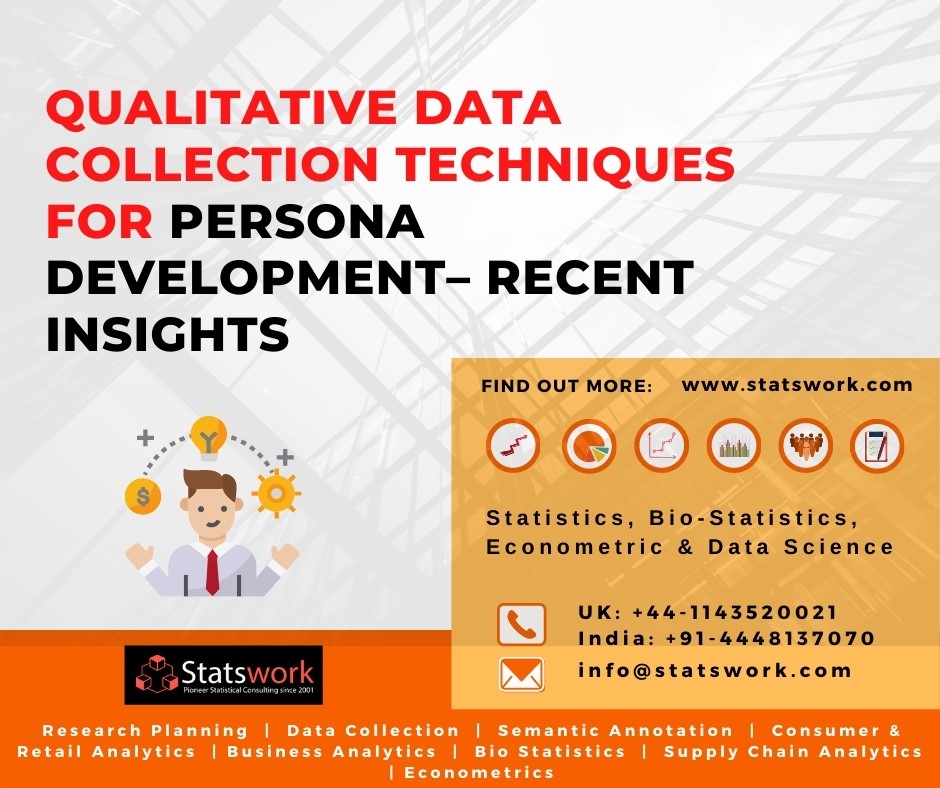Introduction:
Data matters everywhere and everything. In this decade, it is evident that a huge amount of data is required for understanding the business community from scratch to the core. Those data can be segregated through two ways, Qualitative and Quantitative data. For better understanding obtained from qualitative research, there are many techniques to establish the data collection and analysis part of the research. In this article, the techniques and tactics to enhance the data collection and analysis segment in the Qualitative research. [1]
Qualitative Research:
The purpose of qualitative research is to estimate the market research and analytics based on the insights of people who will participate in the set of questions or interviews done by interviewers/researchers. Many researchers decided to conduct their research using qualitative data, which gives the common and real opinions of people regarding the market insights.
To establish successful qualitative research, the initial step of the research, which is Data collection has to be done effectively and efficiently. Followed by the analyzing segment where the collected data has to be analyzed for accurate results and outcomes. [2]
There are several methods and techniques available to conduct Qualitative Research,
- In-depth interview (One-o-one interview)
- Focus groups
- Ethnographic research
- Content analysis
- Case study research
All of the methods and techniques for qualitative research were born from the social and behavioural sciences.
Data Collection and Analysis:
The data collection process for Qualitative research generally holds the non-numerical data which occurred by the opinions from the people and previously mentioned methods. Based on the collected data, the researcher can estimate the decision to obtain accurate results for the research holistic, rich, and nuanced form of data is needed. [3]
Data analysis is highly needed to produce accurate results. Textual data analysis is a data analysis approach that differs from all other qualitative research approaches in that it examines the social lives of research subjects. It decodes their words, acts, and so on. [4]
Recent Techniques and Tools For Data Collection and Analysis:
There are six significant QDA methods available in Qualitative methods,
- Qualitative content analysis
- Narrative analysis
- Discourse analysis
- Thematic analysis
- Ground theory
- Interpretive Phenomenological analysis
How to decide the right technique for your research?
Choosing the best qualitative data analysis approach is primarily determined by the study’s goals, priorities, and questions. In other words, the right tool for the job is determined by the project at hand. Consider the following scenario:
- Examine how words are used and what they say about the storyteller’s meaning.
- Perhaps the aim of your study is to get a better understanding of the individual.
- Perhaps the aim of your study is to gain insight into the impact of a particular community on its participants.
FIGURE:
A high-level research landscape of data collection for machine learning. The topics that are at least partially contributed by the data management community are highlighted using blue italic text. Hence, to fully understand the research landscape, one needs to look at the literature from the viewpoints of both the machine learning and data management communities [5]
TABLE: Qualitative Data Analysis Methods Used in 59 Qualitative Studies in HRDQ. [6]
Conclusion:
When you make a career change, it’s normal to have reservations. However, make sure you’re safe and trusting in your craft and capacity. And, in terms of data analytics, it can be one of the most stable and well-paying professions. Data analytics has a lot of importance in today’s world, so we’ve compiled a list of all the specifics about data analytics’ future potential.
Future Scope:
Based on the recent trends and technologies, tedious processes also can be efficiently concise using automation techniques, machine learning algorithms, data science techniques, and artificial intelligence algorithms.
- Companies will be more vocal in their requests and will make better use of data to secure financial advantage, indicating that data analytics has a bright future.
- The market for data scientists is expected to skyrocket.
- The Internet of Things, abbreviated as IoT, will experience explosive development. The management, processing, and protection of large volumes of data provided by IoT, both structured and unstructured, will continue to dominate the industry.
Begin by evaluating your research goals, priorities, and research questions to determine what you’re looking for, and then choose an approach that suits you. Never use a tool only because you like it or have used it before; the analysis method (or methods) must be in line with your research’s overall goals and objectives.
References:
[1] Allan, Graham. “Qualitative research.” Handbook for research students in the social sciences. Routledge, 2020. 177-189.
[2] Alam, MdKausar. “A systematic qualitative case study: Questions, data collection, NVivo analysis and saturation.” Qualitative Research in Organizations and Management: An International Journal (2020).
[3] Guest, Greg, EmilyNamey, and Mario Chen. “A simple method to assess and report thematic saturation in qualitative research.” PLoS One 15.5 (2020): e0232076.
[4] Isoaho, Karoliina, Daria Gritsenko, and EetuMäkelä. “Topic modeling and text analysis for qualitative policy research.” Policy Studies Journal 49.1 (2021): 300-324.
[5] Roh, Yuji, Geon Heo, and Steven EuijongWhang. “A survey on data collection for machine learning: a big data-ai integration perspective.” IEEE Transactions on Knowledge and Data Engineering (2019).
[6] Lester, Jessica Nina, Yonjoo Cho, and Chad R. Lochmiller. “Learning to do qualitative data analysis: A starting point.” Human Resource Development Review 19.1 (2020): 94-106.
